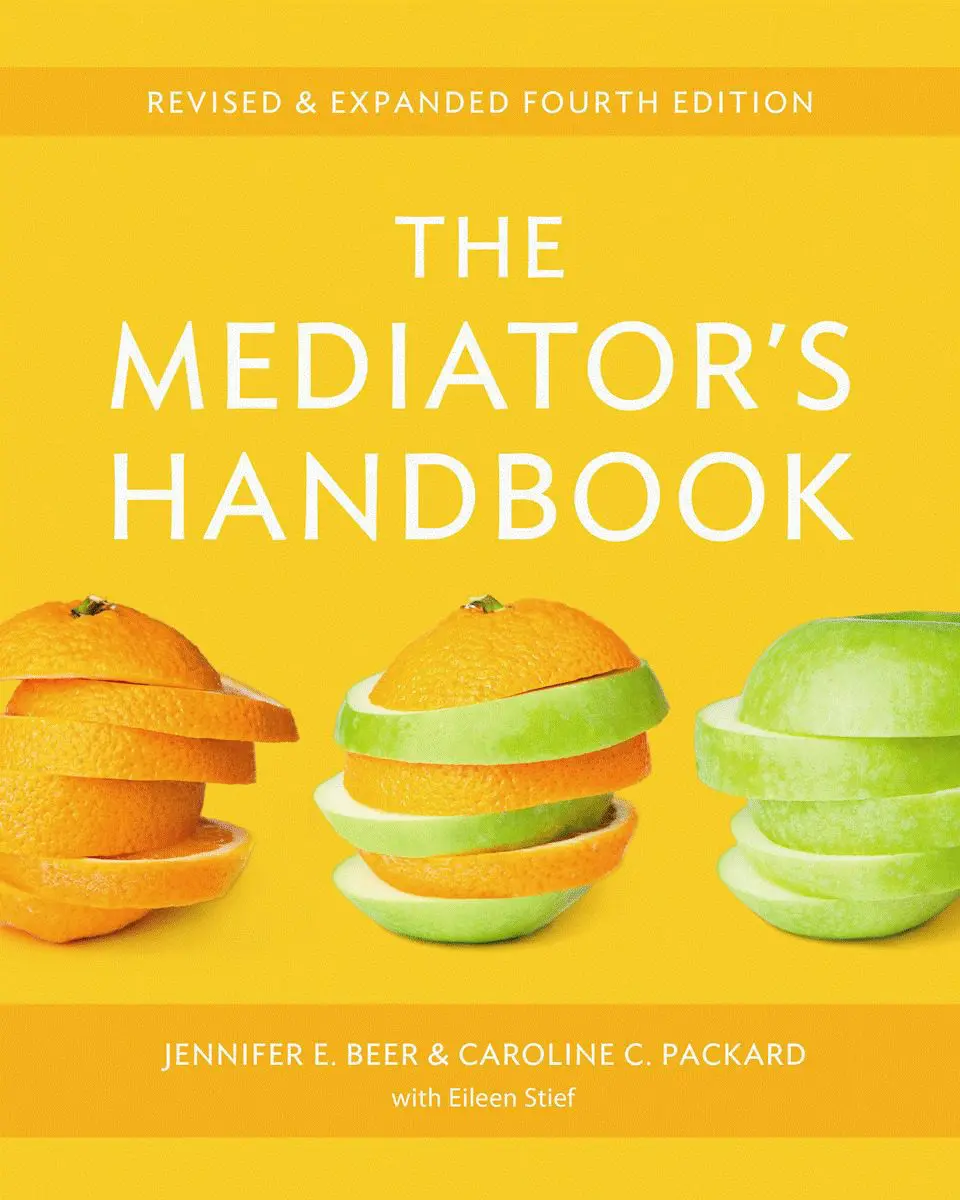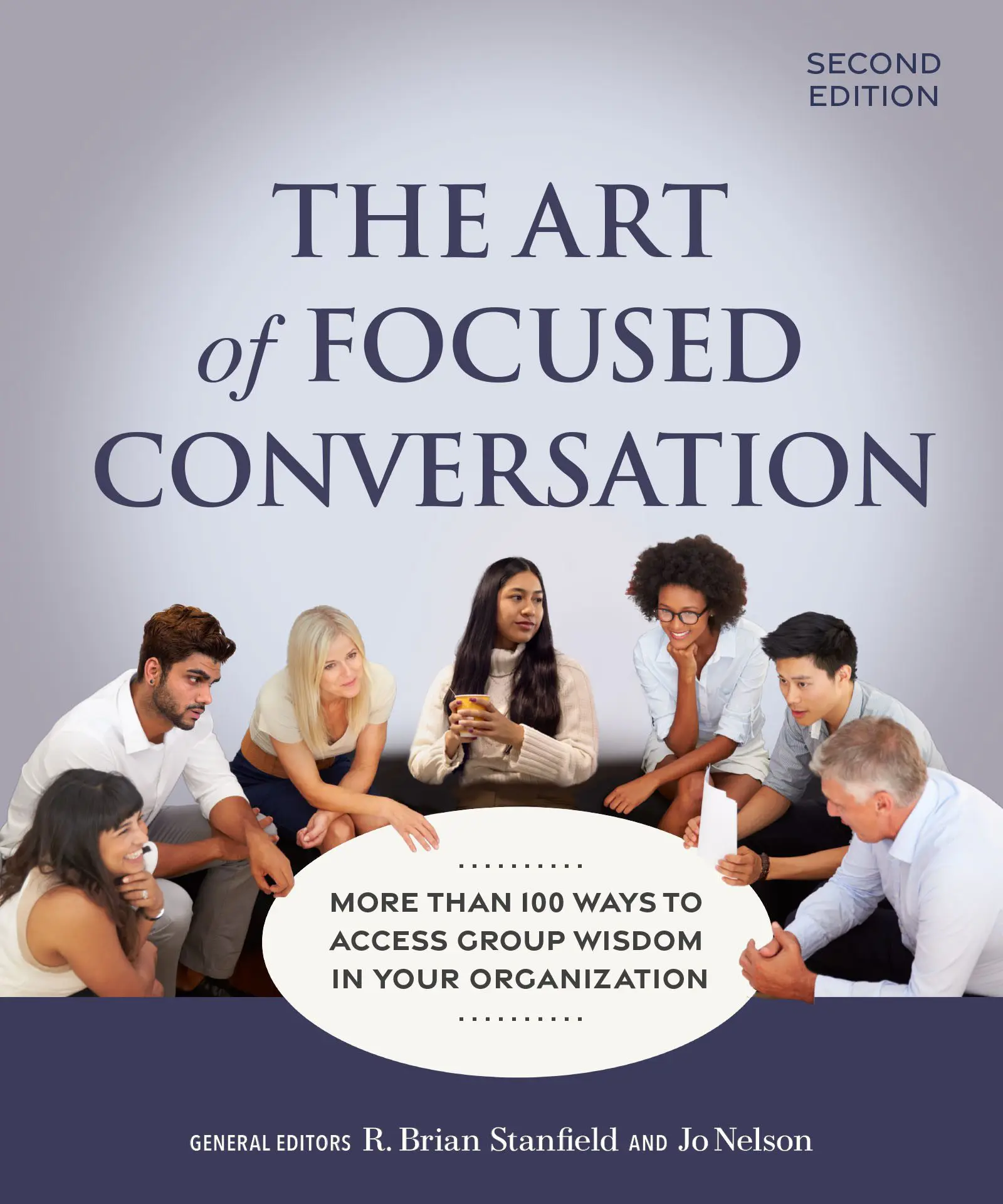
Conflict often arises in a world where differences in opinions, needs, and desires are inevitable. Navigating these conflicts can profoundly impact our lives, whether in personal relationships, workplaces, or communities. Conflict resolution and mediation offer invaluable tools to help bridge divides, fostering understanding and collaboration instead of escalation and discord.The Mediator’s Handbook by by Jennifer E. Beer, Caroline C. Packard, Eileen Stief, and Elizabeth Elwood Gates, offers a step-by-step guide to the art of finding common ground and transforming conflict into opportunities for growth and harmony. In this excerpt from the book, the authors explore the process, and introduce “The Exchange.”
Excerpt from The Mediation Session Part 1: Exploring the Situation
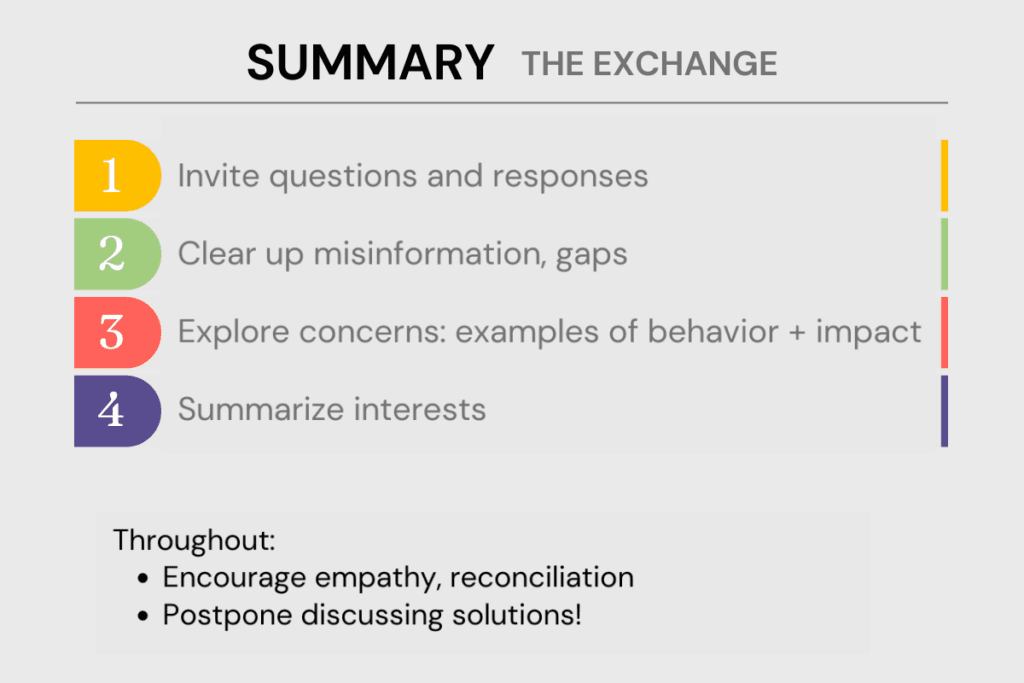
Purpose: Finding out what matters
After each person has presented their perspective, they begin open discussion, a phase we call the Exchange. This face-to-face conversation about people’s concerns and hopes is the heart of the mediation.
Our mediation colleague Chel Avery explains it this way: “The Exchange is like cleaning out your closet . . . It looks like a huge unpleasant mess, and you wonder how you’ll ever organize it. But first you have to start by dumping all the stuff out and seeing what is there.”
As the sketch [below] shows, the Exchange starts out with a jumble of accounts, claims, demands, interpretations, concerns. The mediator helps participants sort through it, gradually building a clearer, shared picture of their situation. Ideally a shift happens on two fronts:
- From a self-centered view ➡ to a situation-centered view.
- From adversarial mode ➡ to cooperative mode.
By the end, people should have more accurate information, have identified what interests need to be met in order to resolve their conflict, and be ready for problem-solving. In some cases, they may also have experienced emotional relief and more empathy for the other side.
The Exchange: Facilitating
Lots of things are going on during the Exchange! Before we look at the particular tasks, here are some overall facilitation tips:
Support the people
- Listen carefully.
- Be patient, unhurried, accepting.
- Work WITH the way they are participating. You are unlikely to change people’s behavior or attitudes.
- Focus on what their emotions reveal about the situation rather than on the emotion itself. For example, ask, What disappointed you? not “How did that make you feel?”
- Prevent hostile exchanges.
- Don’t try to persuade them of anything.
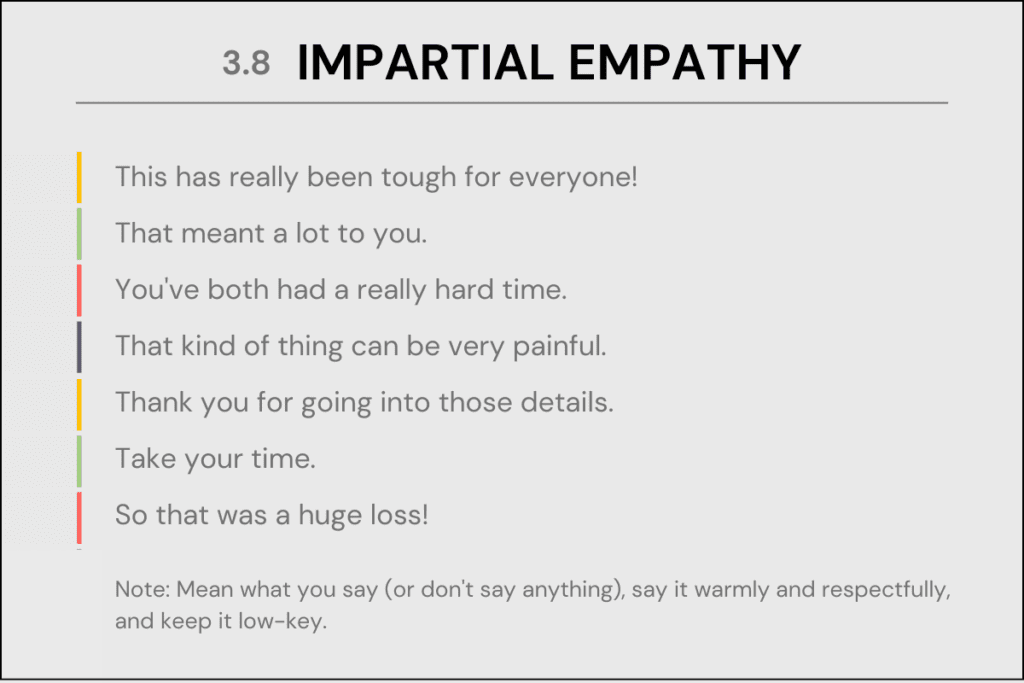
Manage the process
- Get them talking to each other rather than to you.
- Use visuals such as a flip chart to organize the discussion.
- Consult them about process decisions.
- Use acknowledging and other rewording tools: reflect back, prompt, summarize content, orient them to where they are in the process, ask “what & how” questions, reframe.
Gather information for problem-solving
- Use their goals for the process as your compass.
- Draw out substantive, concrete information with warmth and curiosity.
- If they start repeating, summarize and ask if there’s anything else, turn to another topic, or ask a question to elicit new information.
- Refrain from discussing solutions. It can be tempting but it works better if they fully explore different aspects of the situation before they start problem-solving. Note down any ideas to return to later.
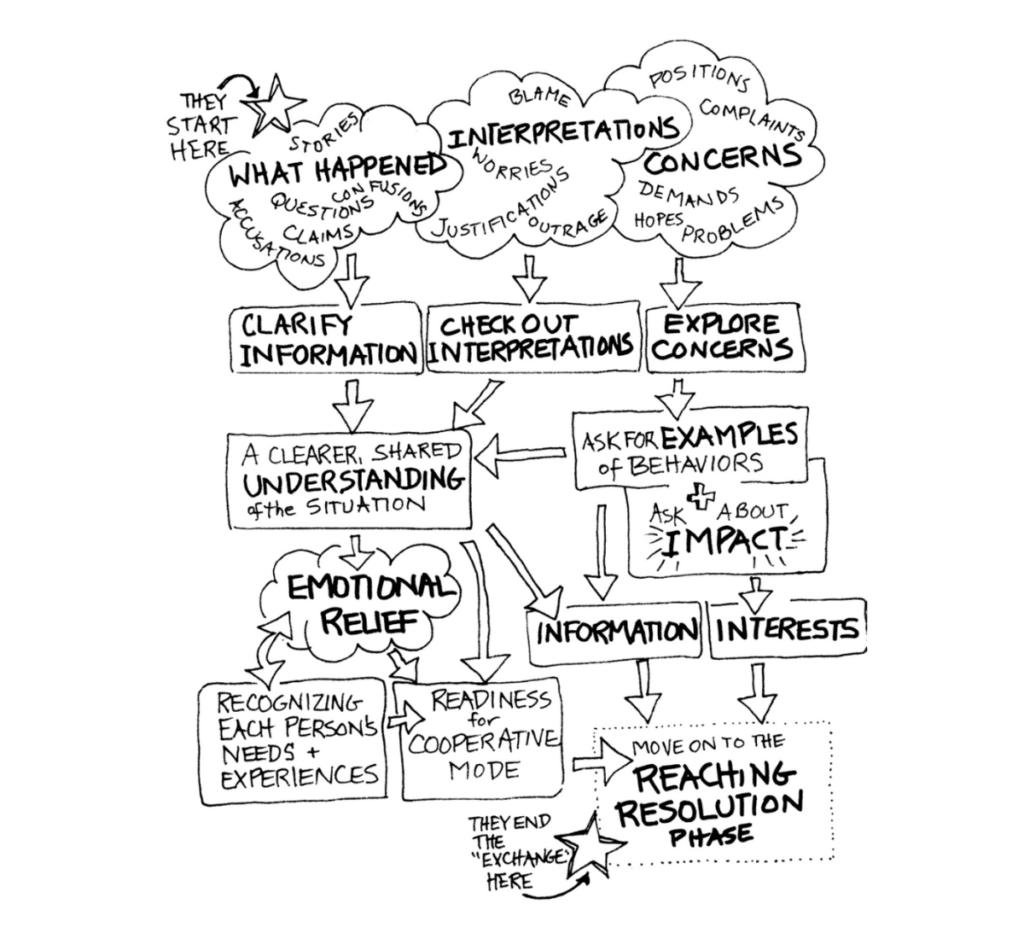
The Exchange: Tasks & flow
The sketch [above] outlines how the tasks of the Exchange connect to each other. All those arrows! Yes, it’s a highly interactive, intertwined conversation. There is no set sequence, and participants usually bounce from one topic to another, with the mediators following their lead. However, eventually they need to cover the bases for each main concern: information, interpretations, “examples + impacts,” and interests.
To start, invite questions and responses
After the Listening go-round, participants usually launch into their own questions about facts (“What happened?”) and motives (“Why did you do that?”). This is great, let it roll!
If they don’t start talking spontaneously, invite them to respond to what they’ve heard:
- Do either of you have a question for the other?
- Jane, I asked you to hold a thought a minute ago, would you like to talk about that now?
- I’m sure you have some questions, and I have some too.
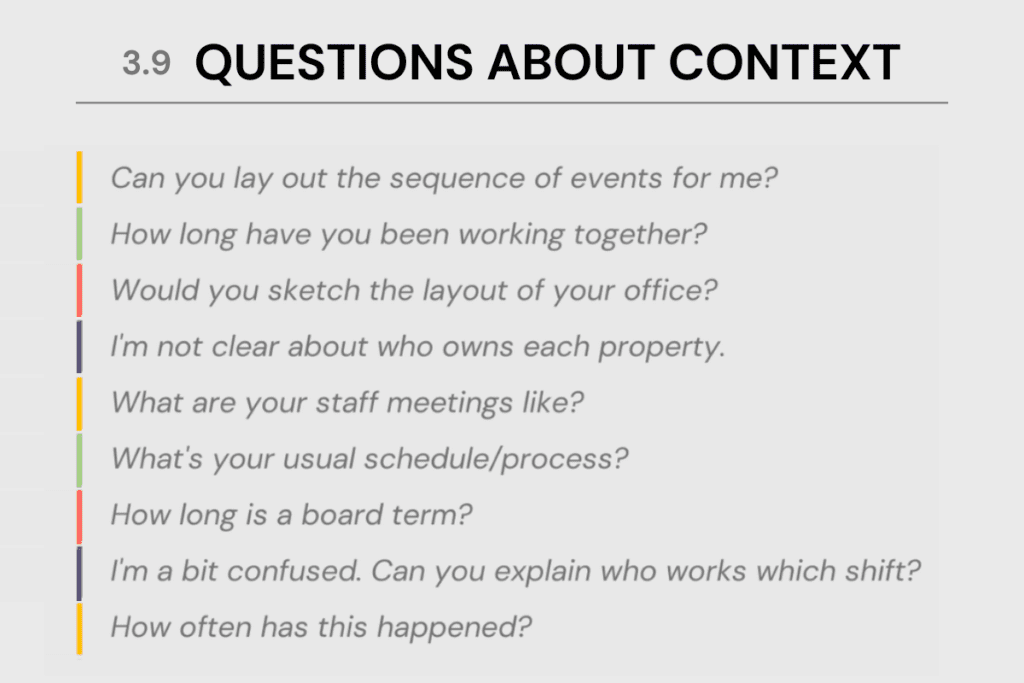
Orient yourself to their context
Your background questions orient everyone to the broader context, and can sometimes spark a cooperative conversation. If they don’t know each other well, the other party may need the information, too. Useful questions:
- Ask for any information you need to follow the thread of their narrative. Don’t be shy: if you don’t understand what they mean, you can’t help them. Convey interest and curiosity; don’t interrogate.
- Ask for facts they will probably agree about. Save probing questions about feelings, “what happened,” and hot topics till later.
- Ask for information which they can explain together, such as drawing an organizational chart, putting together a timeline, looking at any photographs they brought.
Throughout the mediation, you can go back to these kinds of neutral, contextualizing questions to cool down or redirect conversation.




